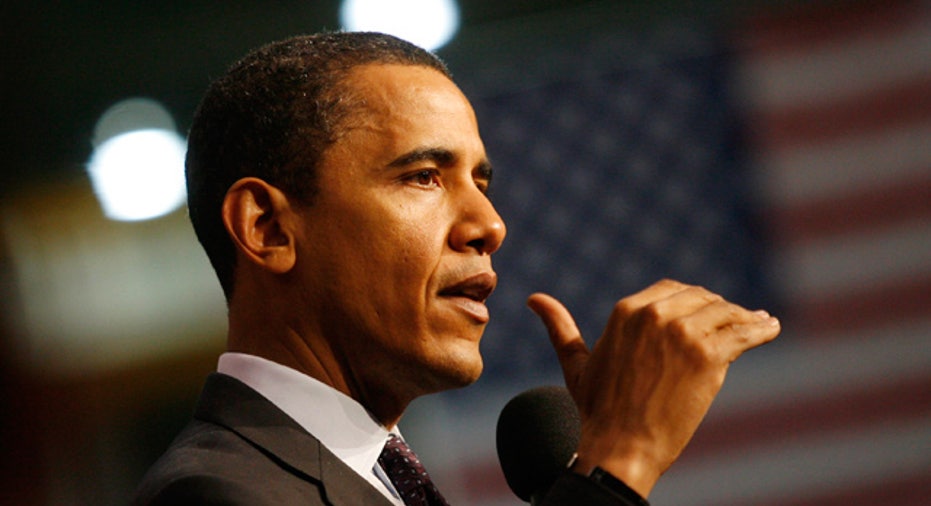Infrastructure Bank May Boost Size of Obama Jobs Bill

The White House said Monday that the President Obamas proposed national infrastructure bank could back $100 billion to $200 billion in new state and local road, bridge, mass transit and other projects over the next decade--it hopes in more public-private partnerships with funding from private investors.
That could increase the effective size of the Presidents $450 billion jobs bill to the range of $550 billion to $650 billion, including new infrastructure spending from non-federal sources over the next 10 years. Administration officials claimed that potential greater impact would come at a minimal cost and risk to taxpayers.
According to the jobs legislation the White House released Monday, the bank would guarantee infrastructure project loans, putting taxpayers on the hook for losses.
But a senior administration official said any losses in the program would be minimized because federal support would be targeted to economically viable projects with dedicated revenue sources for loan repayments; direct loans and loan guarantees would be limited in size, and taxpayer subsidies would be conservatively estimated and structured, starting with just a $10 billion federal investment.
Supporters have said Washington guarantees through the bank would assist cash-strapped state and municipal governments by allowing project financing at lower interest rates.
In his jobs plan, the President would spend $10 billion to establish an infrastructure bank, which would help pay for new public construction projects over 10 years with the objective of raising much of the funding for them from pension funds, hedge funds and other private investors.
Gene Sperling, the director of the White House National Economic Council, said in an interview Friday that the Administration expects at least $10 of non-federal funding for every $1 of federal funding or guarantees in bank-supported projects, but that the figure could be closer to $20 in other funding sources for every $1 of federal backing.
I think 10-1 is actually conservative, Sperling said. I think many people think-- including some on our jobs council, some of our business leaders believe--that you could get 20-1 bang for your buck.
A White House spokesperson confirmed Monday that formula could generate about $100 billion to $200 billion in total new financing for state and local infrastructure projects. According to a summary of the jobs legislation, the bank will provide direct loans and loan guarantees to facilitate investment in economically-viable infrastructure projects of regional or national significance.
Government infrastructure banks exist in other countries. In the U.S., supporters have been lobbying Congress for years to create one. They have pressed their case as state and municipal budgets, like the federal, have tightened, and as the nations infrastructure has crumbled and rebuilding it has lagged. Earlier this year, the U.S. Chamber of Commerce joined forces with the AFL-CIO to win backing for a bank.
But critics have attacked infrastructure banks, like similar government-backed financing entities, as potentially costly to taxpayers housing insurance giants Fannie Mae and Freddie Mac have required about a $150 billion bailout as well as of questionable value in jumpstarting job creation. An infrastructure bank would do little to spur the economic recoveryand nothing to create new jobs, Ronald Utt, a senior economics research fellow at the Heritage Foundation, wrote in August.
Utt said the time-consuming nature of creating such a bank would mean more than a year or two will pass before the first dollar of a grant or loan is dispersed to finance a project. He also criticized the billions in direct federal infrastructure spending in the Presidents 2009 stimulus plan as ineffective.
The bank proposal faces an uphill fight in Congress, were some top Republicans oppose it. On Monday, House Republican Leader Eric Cantor (R-VA) called it a Fannie and Freddie for roads and bridges."
But after previously pushing its own type of bank--with up to $30 billion in federal capital over six years--the White House has embraced more restrictive bank start-up legislation in the Senate that has won some bi-partisan support. Sponsors of that proposal have said it could help finance up to $600 billion in projects.
Mirroring the Senate proposal, the Administrations legislation would limit financing to projects with loans that would be repaid (in whole or part) from tolls, user fees, or other dedicated revenue sources that secure the senior payment obligations, according to the White House summary--funding could not be provided for any project whose purpose is private and for which no public benefit is created.
The bank also could not provide or guarantee more than 50% of a projects financing. And like Fannie, Freddie and other government financing entities, it could charge a credit fee to help cover its costs, including any loan losses.
That was just another chance for the President to reach out and say here's something bipartisan we can do, Sperling said of the Administrations new support for the Senate bill. The cost to the federal government is $10 billion. But what you're really doing is helping just cover some of the risk.
According to the White House jobs bill summary, the bank could finance public transportation, water and energy projects, including highways, roads, bridges, mass transit, inland waterways, commercial ports, airports, air traffic control systems, passenger rail, freight rail, water-waste treatment facilities, storm-water management systems, dams, solid-waste disposal facilities, levees, open-space management systems, pollution-reduced energy generation, transmission and distribution of energy, storage of energy and energy-efficiency enhancements for buildings.
Along with the infrastructure bank, the President's jobs plan includes another $95 billion for infrastructure spending, including for school and vacant housing renovation.
You can read more about the bipartisan Senate bank bill here.
You can read more criticism of the bank idea from the Heritage Foundations Ronald Utt here.